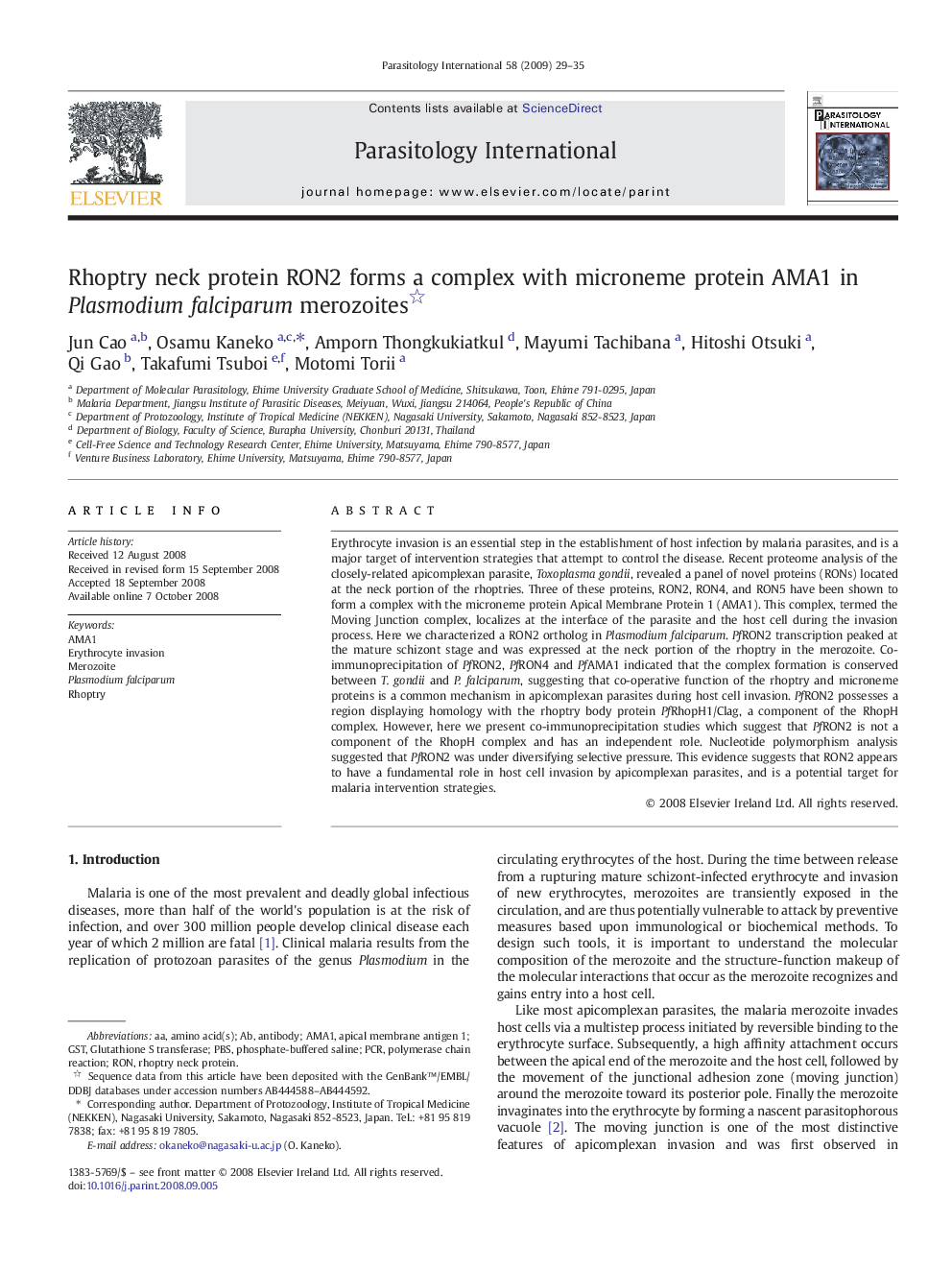| کد مقاله | کد نشریه | سال انتشار | مقاله انگلیسی | نسخه تمام متن |
|---|---|---|---|---|
| 3418149 | 1225496 | 2009 | 7 صفحه PDF | دانلود رایگان |

Erythrocyte invasion is an essential step in the establishment of host infection by malaria parasites, and is a major target of intervention strategies that attempt to control the disease. Recent proteome analysis of the closely-related apicomplexan parasite, Toxoplasma gondii, revealed a panel of novel proteins (RONs) located at the neck portion of the rhoptries. Three of these proteins, RON2, RON4, and RON5 have been shown to form a complex with the microneme protein Apical Membrane Protein 1 (AMA1). This complex, termed the Moving Junction complex, localizes at the interface of the parasite and the host cell during the invasion process. Here we characterized a RON2 ortholog in Plasmodium falciparum. PfRON2 transcription peaked at the mature schizont stage and was expressed at the neck portion of the rhoptry in the merozoite. Co-immunoprecipitation of PfRON2, PfRON4 and PfAMA1 indicated that the complex formation is conserved between T. gondii and P. falciparum, suggesting that co-operative function of the rhoptry and microneme proteins is a common mechanism in apicomplexan parasites during host cell invasion. PfRON2 possesses a region displaying homology with the rhoptry body protein PfRhopH1/Clag, a component of the RhopH complex. However, here we present co-immunoprecipitation studies which suggest that PfRON2 is not a component of the RhopH complex and has an independent role. Nucleotide polymorphism analysis suggested that PfRON2 was under diversifying selective pressure. This evidence suggests that RON2 appears to have a fundamental role in host cell invasion by apicomplexan parasites, and is a potential target for malaria intervention strategies.
Journal: Parasitology International - Volume 58, Issue 1, March 2009, Pages 29–35